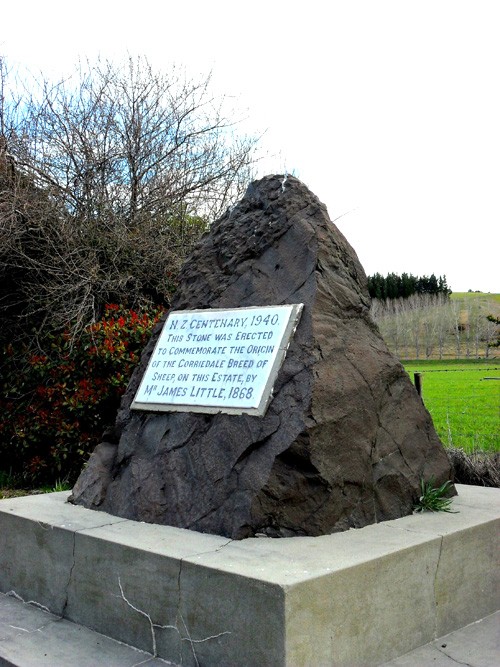
Stone memorial commemorating the origin of the Corriedale breed of sheep. The stone was erected in 1940 as part of the New Zealand centennial celebrations.
The Corriedale was first bred at a north Otago property of the same name, by James Little, a native Scot. The pasture at the property suited neither the sparse-grazing Merino, nor the Romney, which prefer thicker grass cover. By cross-breeding the two, Little created a sheep which thrived in the conditions.
Corriedales are dual-purpose sheep, meaning they are used for meat and wool. Today, they graze in virtually all conditions in New Zealand, Australia, USA and parts of South America.
Read more about Corriedale sheep on Te Ara - the Encyclopedia of New Zealand.

Community contributions